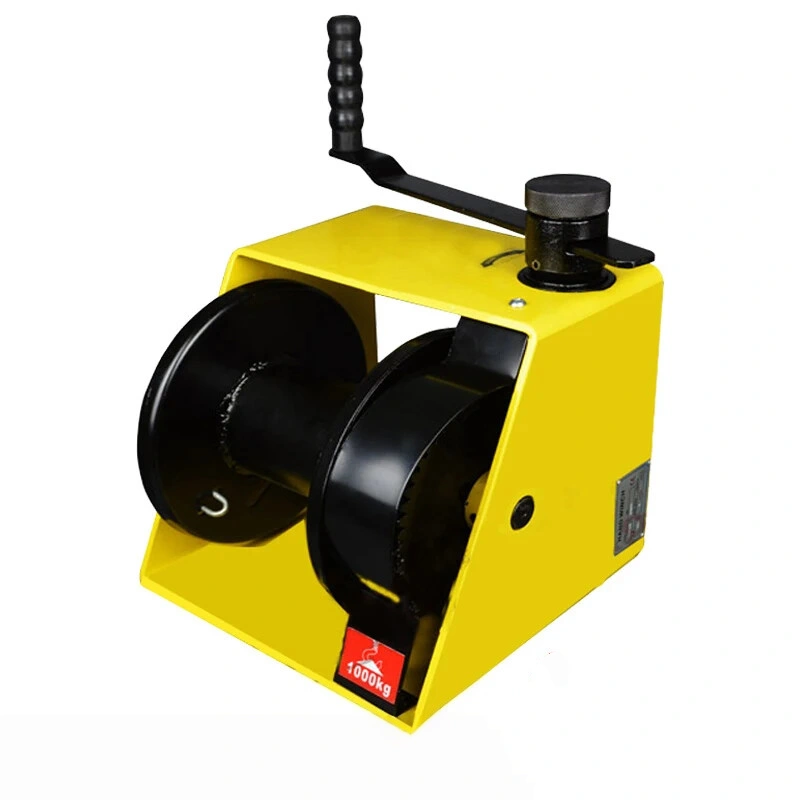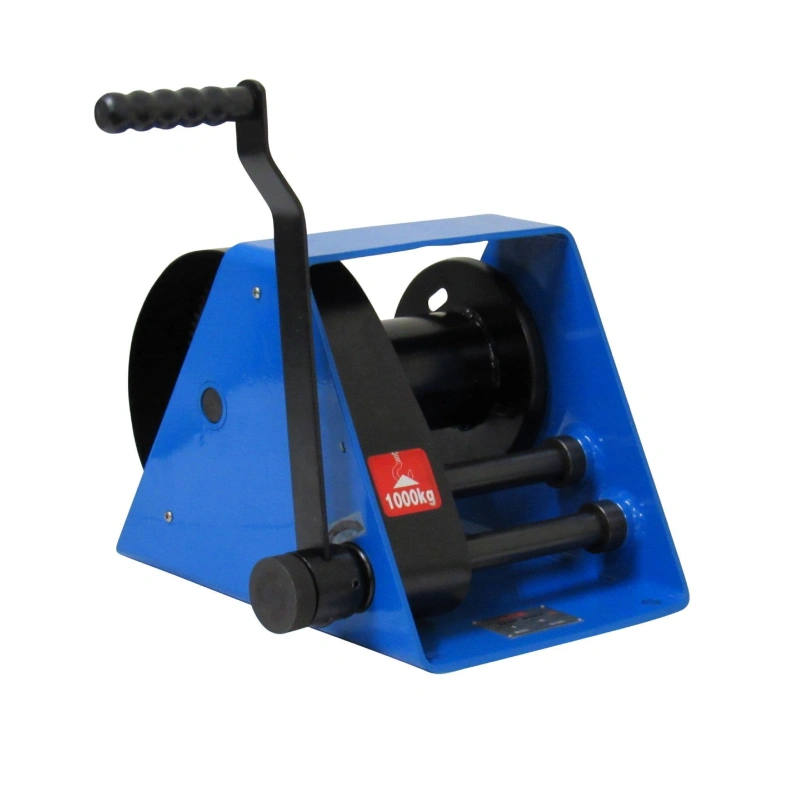A spring balancer is a mechanical device that helps you suspend tools or equipment with balanced tension in industrial settings. You use it to make heavy tools feel almost weightless, which makes handling easier and reduces fatigue.
Recent studies show that spring balancers improve safety and boost productivity by letting workers manage heavy parts more smoothly and precisely. You can rely on expert brands like Powerful Machinery to provide high-quality solutions that keep your workspace efficient and safe.
Key Takeaways
Spring balancers make heavy tools feel lighter, reducing operator fatigue and improving safety in industrial settings.
These devices help keep tools organized and within reach, which boosts productivity and minimizes workspace clutter.
Regular maintenance of spring balancers, like cleaning and inspecting parts, ensures safety and extends their lifespan.
Choosing the right spring balancer involves matching its load capacity and stroke length to your specific tools and workspace needs.
Using spring balancers can prevent injuries by supporting heavy loads and reducing repetitive movements during tasks.
Spring Balancer Overview
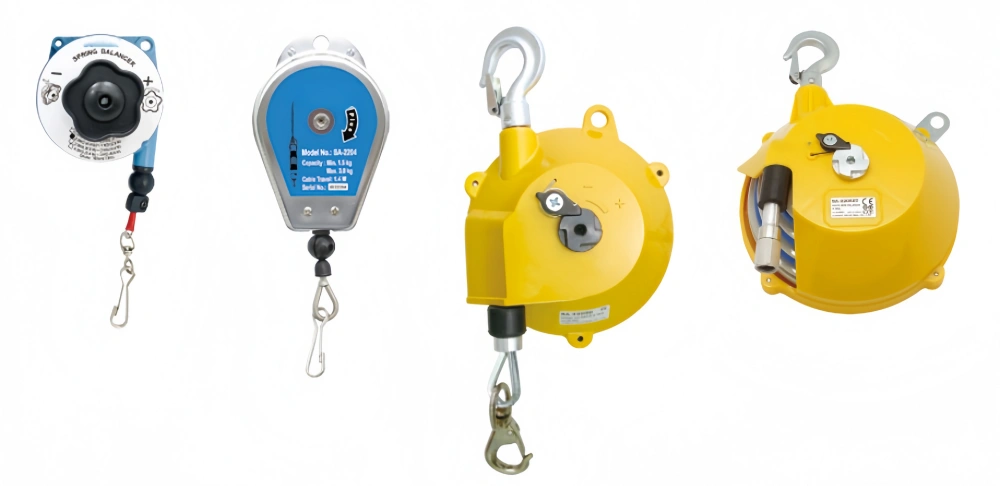
Definition and Function
You use spring balancers to support the weight of tools and equipment in industrial settings. These devices make heavy tools feel almost weightless, which helps you handle them with less effort. The main function of spring balancers is to suspend tools at a set height, so you can access them quickly and easily.
This reduces operator fatigue and lowers the risk of accidents from lifting heavy loads. You also see improved productivity because you spend less time moving or searching for tools during repetitive tasks.
Powerful Machinery’s spring balancer stands out in material handling applications. It provides consistent tension, keeps your workspace organized, and ensures tools remain within reach. You benefit from a safer and more efficient work environment, especially when you use spring balancers for assembly lines or precision tasks.
Tip: Using spring balancers can help you avoid musculoskeletal injuries by reducing repetitive movements and supporting heavy loads with minimal effort.
Mechanism and Structure
A spring balancer uses a simple yet effective mechanism to balance loads. When you attach a tool, the internal spring mechanism counteracts the tool’s weight. This creates a floating effect, so you can move the tool up or down with little resistance.
The hanging hook securely suspends the tool, and the load balance lets you maneuver it smoothly.
Here is a table showing the main components and their functions:
Component | Function |
|---|---|
Spring mechanism | Stores energy to provide lifting force against heavy loads. |
Tension adjustment system | Lets you fine-tune the tension for different tool weights. |
Pulley system | Guides the cable and ensures smooth movement of the suspended tool. |
Housing | Protects the internal parts and extends the device’s lifespan. |
Electronic sensors | Monitors performance and keeps tension levels consistent. |
Powerful Machinery’s spring balancer includes a tension adjustment gauge, a drum lock for secure cable replacement, and a fall arrest device for added safety. You can easily maintain and adjust the device to fit different tools and tasks.
Key Features
When you evaluate spring balancers for industrial use, you should focus on several important features:
Tool weight: Make sure the balancer supports the weight of your tool or equipment.
Working environment: Choose materials that match your environment, such as stainless steel for corrosive areas.
Tool size and features: Check that the balancer fits the size and design of your tool.
Cable length: Measure your workspace to determine the right cable length for smooth operation.
Powerful Machinery’s spring balancer offers a wide range of capacities, from 1.5 kg to 160 kg, and stroke lengths up to 1.7 meters. The compact design requires no electrical or pneumatic power, making it cost-effective and easy to install.
You get precise tool control, improved safety, and a clutter-free workspace. These features make spring balancers essential for many types of spring balancers and applications in modern industry.
Types of Spring Balancers
Understanding the Types of Spring Balancers
You encounter several types of spring balancers in industrial settings. Each type serves a unique purpose and fits specific tasks. When you select a spring balancer, you should consider the tool weight, workspace, and the demands of your application.
Here is a table that helps you see how spring balancers are categorized:
Category | Types/Details |
|---|---|
By Type | Spring-driven, Pneumatic, Electric |
By Capacity | 0-5 kg, 5-15 kg, 15-30 kg, Above 30 kg |
By Application | Assembly Lines, Production Cells, Workshops, Cleanrooms |
By End-Use Industry | Automotive, Aerospace & Defense, Electronics, General Manufacturing, Construction, Energy, Shipbuilding |
1. Standard Spring Balancers
You use standard spring balancers for light to medium-duty tasks. These devices support tools that weigh between 5.5 lbs. and 11 lbs. You find them in assembly lines and workshops where you need to keep tools accessible and reduce operator fatigue.
The stroke length usually reaches up to 5.57 feet, which gives you enough range for most repetitive tasks.
2. Heavy-Duty Spring Balancers
Heavy-duty spring balancers help you manage heavy loads in demanding environments. You rely on these devices in industries like automotive, aerospace, and construction.
They suspend large tools and equipment, making it easier for you to lift and maneuver objects safely. Powerful Machinery offers models with capacities up to 160 kg, which means you can handle even the toughest jobs with confidence.
3. Retractable Spring Balancers
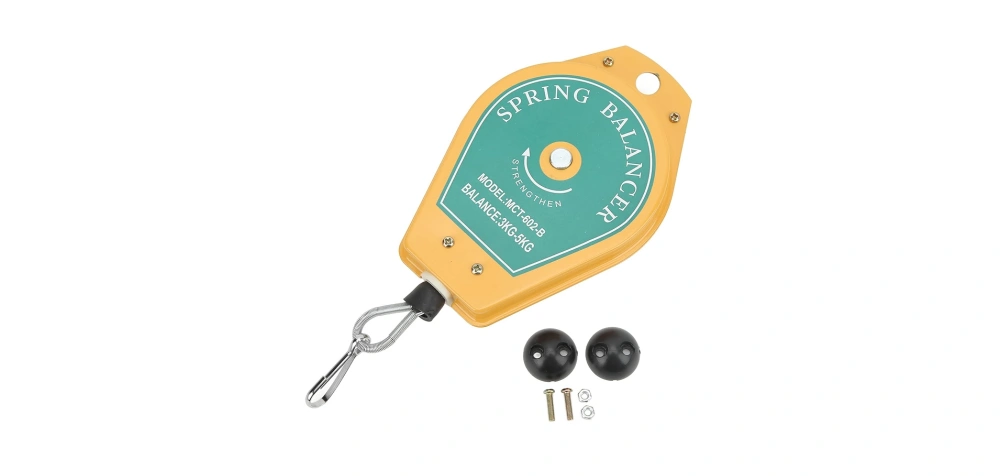
Retractable spring balancers give you flexibility and control. You use them when you need to move tools across a wider area or adjust the working height frequently.
These balancers keep your workspace organized and prevent tools from cluttering your bench. You see them in production cells and electronics manufacturing, where precision and efficiency matter most.
Note: Powerful Machinery’s spring balancer range covers standard, heavy-duty, and retractable models. You can choose the right device for your workspace, whether you need to suspend lightweight tools or manage heavy loads.
Industrial Applications for Spring Balancers
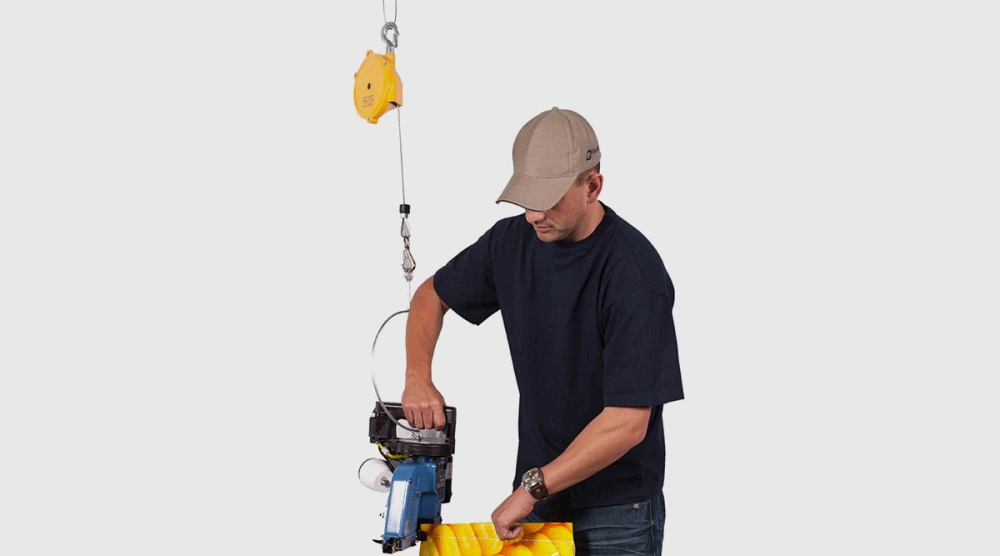
Spring balancers play a vital role in many industries. You see them in automotive plants, aerospace facilities, and electronics workshops. Each industry uses spring balancers for different applications.
Here is a table that shows how industries use spring balancers:
Industry | Specific Applications |
|---|---|
Aerospace | Lifting heavy objects, using various tools for assembly processes, and enhancing efficiency and safety. |
Automotive | Precise assembly of complex components, reducing operator fatigue with calibrated counterbalance tools. |
You use spring balancers to lift heavy loads, support welding guns, drills, and screwdrivers, and keep tools within reach. In aerospace, you rely on spring balancers to handle large parts and improve safety. In automotive, you use them for precise assembly and to reduce fatigue during repetitive tasks.
Powerful Machinery’s expertise ensures you get spring balancers that meet strict safety standards and deliver reliable performance. You benefit from certified products that fit your specific applications, whether you work in construction, manufacturing, or transportation.
Tip: When you choose a spring balancer, always match the device to your tool weight and workspace needs. This helps you improve safety and efficiency in every application.
Benefits of Spring Balancers
Safety and Ergonomics
You improve safety in your workspace when you use spring balancers. These devices include several features that protect you and your team during daily operations. The enclosed body eliminates openings that could cause finger injuries.
The wire arrest mechanism prevents the wire rope from whipping if it becomes dislodged. The containerized spring assembly hides sharp edges, making maintenance safer. Safety pins stop the equipment from falling if the spring fails.
Safety Feature | Description |
|---|---|
Enclosed Body | Eliminates openings that could cause finger injuries, reducing the risk of accidents. |
Wire Arrest Mechanism | Prevents whipping action of the wire rope in case of dislodging, protecting personnel from injury. |
Containerised Spring Assembly | Conceals the sharp edges of springs, making maintenance safer and easier. |
Safety Pin Stops | Prevent equipment fall and operator injury in case of spring failure. |
You also benefit from better ergonomics. When you install spring balancers, you reduce vibration exposure for workers using grinding tools. This change leads to less fatigue and better hand strength. You handle tools more comfortably, which lowers the risk of muscle strain.
Powerful Machinery’s spring balancer includes a fall arrest device and easy tension adjustment, which further improve safety and ergonomics.
Productivity and Tool Protection
Spring balancers help you work faster and more accurately. Balanced tools let you complete tasks with greater speed and precision. You see fewer errors, which means less product waste and lower costs. When you use spring balancers, you also protect your tools.
Proper weight distribution minimizes wear and tear, extending tool life. Regular maintenance keeps your suspended tools in top condition and reduces unexpected failures.
Balanced tools allow you to work faster and more accurately, which increases productivity.
Improved tool control minimizes product waste from errors, saving you money.
Spring balancers ensure proper weight distribution, which helps with tool protection and longevity.
Consistent maintenance reduces damage and keeps your tools ready for all applications.
Powerful Machinery’s spring balancers stand out for their durability and easy maintenance. You get reliable tool protection and improved efficiency in every task.
Workspace Organization
You keep your workspace organized and efficient when you use spring balancers. These devices let you free your hands, so you can focus on other tasks without being weighed down by tools. You pull down tools when needed and retract them after use, which keeps your workstation tidy.
Evidence Description | Impact on Workspace Organization and Efficiency Metrics |
|---|---|
Spring balancers allow workers to free their hands, increasing productivity. | This leads to a more organized workspace as workers can perform other tasks without being encumbered by tools. |
They reduce the physical effort required to handle tools. | This can improve focus and reduce the risk of injury, contributing to overall efficiency. |
Tools can be easily pulled down when needed and retracted after use. | This keeps the workstation clean and tidy, enhancing the organization of the workspace. |
Incorporating tool balancers can enhance tool lifetime by preventing accidental drops. | This contributes to efficiency as tools remain in good condition, reducing downtime for replacements or repairs. |
A safer and organized workspace leads to increased productivity. | An organized environment minimizes the time spent on repetitive tasks and lifting heavy tools, allowing operators to focus on their work. |
You notice that a clean and organized workspace improves safety and increases productivity. Powerful Machinery’s spring balancers help you maintain a clutter-free environment, making your daily handling tasks smoother and more efficient.
What is a Spring Balancer Used For?
You find spring balancers in many industrial environments because they make tool handling safer and more efficient. These devices suspend tools at a set height, so you can grab them quickly and return them just as easily. This setup helps you avoid clutter and keeps your workspace organized.
Here are some of the most common applications for spring balancers:
Tool balancers: You use them to hold tools like drills, welding guns, and screwdrivers. This setup improves ergonomics and reduces operator fatigue by keeping tools in a designated spot.
Assembly lines: You rely on spring balancers to offset the weight of fixtures or components. This makes tasks like automotive assembly and welding smoother and more precise.
Machinery: You use spring balancers to balance moving parts, which reduces vibration and wear. They also support lids or countertops, making them easier to lift and lower.
Doors and lifts: You can make heavy doors or platforms easier to open and close by offsetting their weight with a spring balancer.
In manufacturing, you handle tools and equipment with greater precision. Spring balancers help you work faster and with less effort, which minimizes fatigue. On assembly lines, especially in the automotive and electronics sectors, you lift heavy components repeatedly. Spring balancers make this process easier and safer.
Electronics repair workshops benefit from spring balancers because they allow for precise tool handling. This reduces errors and ensures consistent quality. In packaging industries, you lift and position items many times each day.
Spring balancers speed up this process and help reduce workforce fatigue. Warehouses and logistics centers use ergonomically designed spring balancers to lower the risk of musculoskeletal disorders among workers.
Tip: Using spring balancers in your workspace not only boosts productivity but also improves safety and reduces the risk of injury.
You see that spring balancers play a vital role in many industries. They support your daily tasks, protect your health, and keep your workspace running smoothly.
Spring Balancer Safety and Selection
Safety Features and Maintenance
You need to prioritize safety when using spring balancers in your workspace. Enhanced safety features protect you and your team during daily tool handling. Look for enclosed bodies that prevent finger injuries and wire arrest mechanisms that stop cables from whipping.
Emergency stop systems and safety latches add another layer of protection. Regular maintenance keeps your spring balancer reliable and extends its lifespan.
Adjust the load capacity to match the weight of your tool. This prevents spring fatigue and ensures ergonomic support.
Clean and lubricate moving parts often. Follow manufacturer guidelines to avoid malfunctions and maintain durability.
Inspect safety latches and emergency stop mechanisms. Make sure they work properly to meet safety standards.
These practices help you reduce fatigue and improve tool handling. You create a safer environment for everyone on your team.
Selection Criteria
Choosing the right spring balancer depends on several important factors. You should consider the lifting capacity, stroke length, and material selection for your application.
Load capacity determines the maximum weight your spring balancer can support. Select a model that matches your tool’s weight for safe and efficient operation.
Stroke length gives you flexibility and range of motion. Pick a balancer that fits your working height and workspace layout.
Material selection affects durability and reliability. Use rugged materials for harsh environments to ensure long-term performance.
Adjustable spring tension lets you fine-tune the balance for precise tool handling and improved ergonomics.
Spring balancers support a wide range of tools, from lightweight screwdrivers to heavy welding guns. You benefit from ergonomic support and reduced fatigue during repetitive tasks.
Powerful Machinery Solutions
Powerful Machinery provides spring balancers that meet strict safety standards and quality requirements. You can trust their products for durability and enhanced safety in demanding environments.
Certification Type | Details |
|---|---|
ISO9001:2015 | Quality management system certification |
ATEX | Certified for use in explosive environments |
You receive strong technical support and comprehensive warranties with every purchase. After-sales service includes quick response times and expert guidance. Powerful Machinery’s commitment to customer satisfaction ensures you get reliable spring balancers for all your lifting capacity needs.
You can count on their team to help you select the best solution for your workspace and maintain high standards of safety and ergonomics.
Tip: Always choose certified spring balancers and follow recommended maintenance practices to maximize safety and tool longevity.
Conclusion
You play a key role in creating a safer, more productive workplace by choosing the right spring balancer. The table below highlights why these devices matter in industrial settings:
Benefit | Description |
|---|---|
Enhanced ergonomics | Supports tool weight, reducing strain and fatigue. |
Increased productivity | Speeds up tasks and improves precision. |
Safety in the workplace | Prevents accidents by keeping tools secure and organized. |
To maximize results, follow best practices such as regular maintenance, employee training, and compatibility checks. Select certified spring balancers from trusted suppliers like Powerful Machinery to ensure long-term reliability and safety.
FAQ
What is the main purpose of a spring balancer?
You use a spring balancer to keep tools at a set height. This makes heavy tools feel lighter. You can grab and release suspended tools quickly. This setup improves safety and helps you work faster.
How do spring balancers improve protection in the workplace?
Spring balancers prevent tools from falling. You get extra protection from features like fall arrest devices. These features keep you and your equipment safe. You also avoid damage to suspended tools during daily tasks.
Can tool balancers help with ergonomics?
Yes, tool balancers support better ergonomics. You reduce strain on your hands and arms when you use suspended tools. This setup lowers fatigue and helps you work comfortably for longer periods.
What maintenance do spring balancers require for ongoing protection?
You should inspect your spring balancer often. Clean and lubricate moving parts. Check for wear or damage. Regular maintenance ensures protection for both you and your suspended tools.
Are spring balancers suitable for all types of tools?
You can use spring balancers for many tools, including drills, welding guns, and screwdrivers. Always match the balancer’s capacity to your tool’s weight. This ensures safe and efficient operation.

